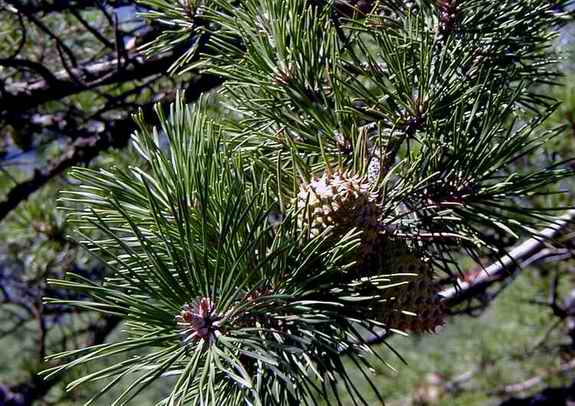|
Return to Hiker's Notebook Home Page
Common Name: Table Mountain Pine, Squirrel Pine, Hickory Pine, Prickly Pine, Ridge Pine, Southern Mountain Pine Scientific Name: Pinus pungens (Genus Pinus is Latin for something made of pine-wood, including a ship, an oar, a pine-torch, and a garland of pine-leaves; species pungens from Latin pungere to prick, referring to the stout, hooked spines on the cones).
Potpourri: Table Mountain Pine is the only pine restricted to the Appalachian Mountains. It was first harvested for use in 1794 from Tablerock Mountain in Burke County, North Carolina from which it gets its name. Although it grows at elevations ranging from150 feet in Delaware to 5,780 feet in the Great Smoky Mountains, it is dominant over the closely related pitch pine (P. rigida) and Virginia pine (P. virginiana) at elevations above 4,000 feet, particularly on south-facing, dry, rocky ridges.
The cones of the Table Mountain Pine are serotinous, meaning late in development. Stands of trees on western and northern exposures have closed cones that remain on the tree for as long as 25 years. The seeds remain viable for up to 9 years. Red squirrels remove cones from the tree to eat the seeds. They do this by chewing away cone scales row by row from the base of the cone. The name squirrel pine derives from this activity.
Table Mountain Pine wood is of low density and strength and has limited use as a building material. It is primarily used for interior sheathing, sub flooring, joists, as well as for pallets and crates. Its tough branches give it the name hickory pine. |
